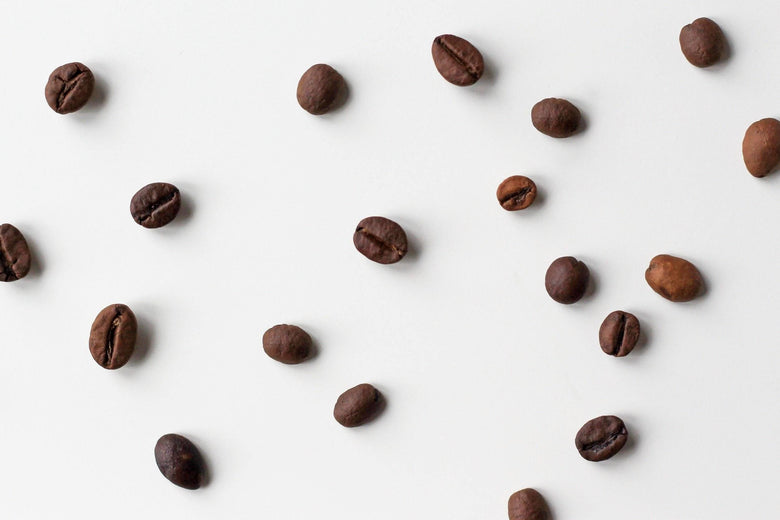What Makes SOE Single Origin Espresso Unique from Combination Beans
What Makes SOE Single Origin Espresso Unique from Combination Beans
Blog Article
Recognizing Coffee Beans: the Journey From Coffee to Blended Coffee Beans

The Origins of Coffee: A Global Perspective
While you could think of coffee as a contemporary staple, its origins map back centuries, intertwining with societies around the world. The story begins in Ethiopia, where legend states a goat herder named Kaldi uncovered the stimulating impacts of coffee beans after discovering his goats romping energetically after consuming them. This sparked rate of interest, leading to coffee's infect Arab investors that valued the brewed drink. By the 15th century, it reached Persia, Egypt, and Turkey, where coffee shops ended up being social hubs for discussion and culture.
As trade paths broadened, coffee made its method to Europe in the 17th century, swiftly obtaining popularity. Each society added its special spin to coffee prep work, enhancing its background.
Farming and Harvesting of Coffee Beans
As coffee's journey progressed, the focus moved to the growing and harvesting of specific bean selections, specifically those utilized for espresso. You'll discover that espresso beans frequently come from Arabica or Robusta plants, each offering distinctive flavors. The ideal growing conditions include high elevations and abundant, well-drained soil, which improve the beans' quality.
During the harvest, picking approaches vary. Timing is vital; you want to harvest when the cherries reach peak perfection for maximum taste.
Once collected, the beans are planned for handling, which is necessary in identifying their last taste. Comprehending the farming and harvesting procedures gives you understanding right into what goes into your preferred espresso, improving your recognition for every mug.
Handling Techniques: From Cherry to Bean
Currently that you have actually discovered concerning collecting coffee beans, allow's explore exactly how those cherries change right into the coffee beans you like. You'll see exactly how different harvesting techniques effect flavor, adhered to by the vital steps of fermentation and drying. We'll break down the milling and grading procedure that determines your coffee's quality.
Gathering Methods Discussed
When it comes to coffee, comprehending harvesting techniques is important, given that they directly impact the taste and high quality of the beans you delight in. There are two main techniques: selective selecting and strip selecting. Careful selecting includes hand-picking only ripe cherries, ensuring you get the best top quality beans. This method usually causes a richer flavor profile, though it's more labor-intensive. On the other hand, strip picking methods collecting all cherries at the same time, regardless of perfection. While it's quicker and less expensive, this can result in a mix of flavors, influencing the final product. Inevitably, the option of harvesting technique can considerably affect your coffee experience, so it's worth understanding just how those beans made it to your mug.
Fermentation and Drying Out
After gathering, the following actions in handling coffee beans play a substantial duty fit their flavor. You'll discover that fermentation is essential, as it helps damage down the mucilage surrounding the beans, enhancing their preference profile. Depending upon the approach, this process can last from a few hours to several days, with varying outcomes based upon temperature and humidity.
Sun-drying allows the beans to soak up flavors from the setting, while mechanical drying out guarantees consistent wetness levels regardless of weather. Proper drying is crucial to avoid mold and mildew and preserve the beans' high quality, eventually affecting your mug of coffee.
Milling and Grading Process
As fermentation and drying out established the phase for flavor growth, the milling and grading process warranties that only the best coffee beans make it to your cup. This stage involves getting rid of the outer layers of the coffee cherry, including the parchment and husk. High-grade beans receive a greater grade, resulting in a richer coffee experience.
Toasting Techniques: Unlocking Flavor Possible
When you roast coffee beans, the method you pick can dramatically impact the flavor profile. Understanding the relationship between time, temperature, and roasting methods is essential to revealing the potential of your brew. Allow's discover just how these components come with each other straight from the source to produce the best cup.
Roasting Methods Explained
While you could assume that all coffee toasting techniques produce the exact same results, the fact is that each strategy discloses one-of-a-kind taste capacities in the beans. You can pick in between approaches like drum roasting, air roasting, or even typical pan roasting. Drum roasting makes use of a turning drum to evenly distribute warmth, improving caramelization and creating a balanced taste. Air roasting, on the other hand, circulates warm air around the beans, advertising a lighter roast with pronounced acidity. Frying pan roasting enables hands-on control but calls for continuous attention to stay clear of burning. Each approach has its subtleties, so explore various methods can help you uncover the best roast that aligns with your preference preferences. Enjoy the trip of finding your ideal mug!

Effect On Taste Profile
Various toasting techniques not just affect the procedure however likewise greatly impact the flavor account of the coffee beans. When you pick a light roast, you'll experience bright level of acidity and flower notes, showcasing the bean's beginning. In comparison, a tool roast equilibriums level of acidity with sweet taste, typically exposing chocolatey touches. Dark roasts, on the various other hand, highlight vibrant, great smoky flavors, often masking the bean's special features. Each strategy exposes different oils and compounds, leading to a large range of tastes. By exploring with different roasting styles, you can uncover which profiles resonate with your palate. Comprehending these nuances helps you value the artistry behind your mug of coffee, improving your total experience with every sip.
Time and Temperature Elements
To release the full flavor capacity of coffee beans, both time and temperature level throughout the toasting procedure play substantial roles. When roasting, you'll find that greater temperatures can swiftly establish tastes, yet if you rush it, you may wind up with charred notes. Conversely, reduced temperature levels enable for a more gradual taste advancement, showcasing the beans' distinct characteristics.

Timing is just as vital; prolonging the roast also long can cause a loss of acidity and illumination, while as well brief a roast may leave the beans underdeveloped. Locating that wonderful spot needs practice and trial and error. By changing these variables, you can expose the abundant, complex tastes concealed within each bean, producing a really impressive coffee experience.
The Art of Mixing: Crafting Distinct Coffee Profiles

Begin by choosing a base coffee that gives a strong Click This Link foundation. A bright Ethiopian bean can bring fruitiness, while a rich Brazilian coffee adds body.
As you mix, remember that each mix informs a tale. You're not just making coffee; you're creating an experience. So, take your time, taste regularly, and delight in the journey of finding your trademark mix.
Developing Techniques: How Prep Work Affects Flavor
Mixing coffee opens up a domain name of taste opportunities, but just how you brew that blend can significantly influence your last mug. On the various other hand, a pour-over highlights the coffee's clearness and illumination, best for showcasing delicate notes.
Coffee, with its high pressure, generates a focused shot that emphasizes sweetness and crema. If you prefer a lighter brew, consider a cold brew approach; it yields a smooth, less acidic preference.
Changing variables like water temperature level, grind size, and make time can transform your coffee's account. Accept the art of developing to discover the tastes concealed in your coffee blends.
The Future of Coffee: Sustainability and Advancement
As the coffee sector progresses, sustainability and innovation are coming to be essential for resolving visit this page ecological challenges and conference customer needs. You'll observe that more coffee business are embracing green techniques, from sourcing beans fairly to applying sustainable farming methods. These changes not just assist the planet yet likewise improve the quality of the coffee you enjoy.
You could see technologies like naturally degradable product packaging and water-saving developing methods that decrease waste. Advanced innovation, such as blockchain, is likewise becoming popular, ensuring openness in the supply chain, which allows you to map your coffee back to its beginnings.
Furthermore, buying local neighborhoods and supporting farmers with fair trade initiatives cultivates a much more lasting coffee ecosystem. As you sip your following cup, remember that your choices can add to a brighter future for coffee. By selecting sustainable brands, you're not simply appreciating a beverage; you're making a favorable influence on the globe.
Regularly Asked Questions
What Is the Difference Between Arabica and Robusta Beans?
Arabica beans are smoother, sweeter, and have a higher acidity, while robusta beans are stronger, much more bitter, and have more high levels of caffeine. When making your coffee., you'll see these differences in taste and aroma.
Exactly How Does Altitude Affect Coffee Bean Taste?
Elevation impacts coffee bean taste considerably. Greater altitudes create beans with brighter level of acidity and complicated tastes, while lower altitudes often produce beans that are larger and much less nuanced. You'll see these differences in your cup!
What Are the Health Benefits of Drinking Coffee?
Consuming alcohol coffee can enhance your power, enhance psychological emphasis, and also enhance physical performance. It's rich in anti-oxidants, may reduce the danger of particular illness, and can advertise a healthier metabolism when eaten in moderation.
Can Coffee Beans Be Reused for Brewing?
Yes, you can reuse coffee beans for developing, but the flavor may be weak. If you take pleasure in experimenting, try recycling them in different means, like chilly brews or including in smoothie mixes for an extra kick.
Exactly how Should I Store Coffee Beans for Freshness?
To keep your coffee beans fresh, keep them in an impermeable container in a trendy, dark location. Prevent exposing them to light, dampness, or warmth, as these aspects can rapidly degrade their flavor and aroma.
Comprehending Coffee Beans: the Journey From Coffee to Blended Coffee Beans.
Currently that you've learned regarding collecting espresso beans, allow's check out just how those cherries transform into the coffee beans you like.When you roast coffee beans, the technique you pick can considerably influence the taste profile - Single Origin Espresso.While you might believe that all coffee toasting techniques produce the very same outcomes, the truth is that each technique exposes distinct flavor possibilities in the beans.Different roasting techniques not only influence the procedure yet also considerably affect the flavor profile of the coffee beans
Report this page